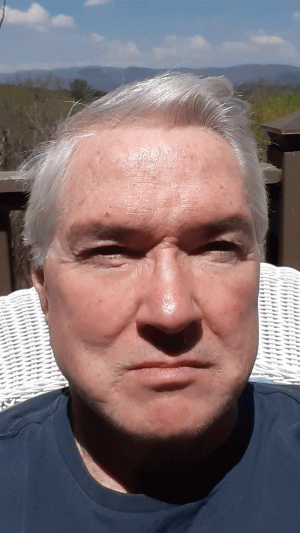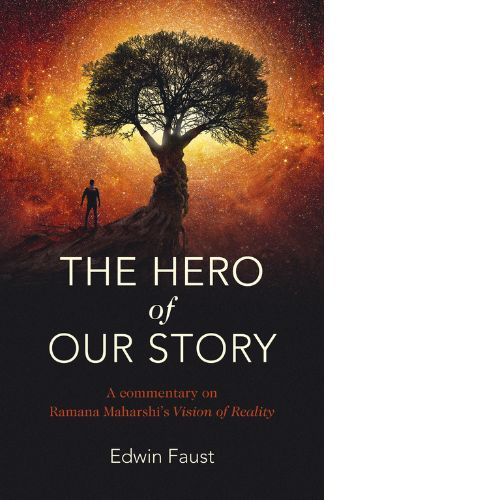by Edwin Faust
The other day I watched a child set down on the beach by her father. She was about two years old and immediately took off, with all the speed with which her little legs could carry her, toward a group of seagulls. The gulls, old hands at this business, bided their time, flying off a second before she reached them. The little girl chased the birds this way and that, and her course brought her closer and closer to the water’s edge. When the last few gulls flew away, she stopped in her tracks, suddenly aware of the ocean. She stared, frozen with uncertainty, then raised her arms, as though she were about to walk a tightrope, and took a few tentative steps into the foam of the receding waves. She decided she liked the feel of the water on her feet and began to stomp and spin and squeal with delight. It did my heart good to watch this happy little scene, and I thought that it might stand as a tableau for life’s chase.
Most of us run after this and that – wealth, pleasure, reputation – but we never really catch the gull; that is, we never reach a place where we can stop and say, “Yes. Now I have arrived. This is where I wanted to be and where I will remain. This is happiness.” Our running can continue until we run out of breath, out of life. But some of us are fortunate enough to find ourselves at the water’s edge, so to speak, where we notice the ocean for the first time. Its splendour, its ceaseless rhythm, is arresting. We stand and stare and feel that somewhere in the distance and the depths lies the answer to the mystery of who we are.
These mystical moments happen to all of us: moments in which we sense that life offers us something rich and wonderful; something beyond the banality of running after what the world calls success. We then begin to recognise that our list of accomplishments has little to do with who we really are and what we really want. We begin to ask in earnest “Who am I?” Finding the answer to this question can acquire a sense of urgency. When it comes to overshadow all other concerns, we will have arrived at the threshold of self-knowledge. But the steps we take beyond that threshold do not always move us in a straight line toward what we seek.
A burning desire to know who we are does not, in itself, remove our conditioning. We tend to approach Self-inquiry in the same way we have approached life: as a quest for success through action. We still hope to redeem ourselves through some singular achievement or experience. We merely shift the arena from the outer world to the inner world. And we look for a hero to emulate; someone whose path to greatness we can retrace. This may partly explain why Ramana Maharshi has become a figure of romance for many Western seekers. His story appeals to our idea of the hero and the quest. He is seen as the Great Soul we want to become.
His biography fascinates us: a young man galvanised by a dramatic revelation leaves home abruptly, travels a great distance to a holy place, seeks out solitude in subterranean temple chambers and remote caves, immerses himself in prolonged states of deep meditation, experiences ecstatic states of consciousness; an ashram is built, as it were, around him, at the base of the sacred mount of Arunachala, and world-weary seekers travel from the far corners of the Earth to sit at the feet of the saint, eager for a look or a word that will transform their lives. Testimonials accumulate. Even after the saint is gone, the place where he dwelt becomes a place of international pilgrimage. To this day, many Westerners come to circumambulate the sacred mount, perhaps dreaming of becoming another Ramana; of finding their own cave and plunging so deeply into meditation that they will never leave it, living always in ecstasy, with the world passing before them like a play of shadows, unable to touch them further with its illusory problems and pains.
This is the dream Ramana, a fantasy about who he was and who we might become. But there is the real Ramana, and he was only concerned with who we are, for there is nothing we can become. The real Ramana is to be found in his writing. And in his chief work, Sat-Darshanam, we meet, not the ethereal holy man of spiritual romance whose feet barely touched the ground, but the solid vision of Vedanta as given to us in the Upanishads and unfolded in the teaching tradition from time immemorial.
There is an errant notion that Ramana is outside this tradition; that he discovered the truths proclaimed in the Upanishads independently of them. And if he did it, perhaps we can do it, too. And some of us hope to duplicate the supposedly revelatory experience we believe Ramana must have had at some definitive moment of enlightenment. This imagined moment is generally assumed to have occurred for Ramana while he was deep in the yogic trance called samadhi.
There is much we don’t know about Ramana, but we know this: whatever he experienced in samadhi was just that – an experience. And there is a difference between having an experience and having knowledge. Samadhi, deep sleep, even psychedelic drugs can deliver an experience of non-duality: we feel the bliss of oneness, of there no longer being a painful and anxious division between us and the world and God. But no one wakes up in the morning enlightened as a result of deep sleep, nor does one come down from an LSD trip as a liberated being. And samadhi also is an event that occurs in time: it has a beginning and an end, which means it is not real, as Vedanta defines reality.
Meditation is an action, not a means of knowledge, a pramana. It can help calm and purify the mind, loosening the hold of desires. It can deliver states of bliss. But bliss will come and go. It will not deliver knowledge. And it is through knowledge alone that we can free ourselves from ignorance and its attendant miseries. Vedanta alone leads to non-dual knowledge.
Ramana, however, was not a typical student of Vedanta, for he had no doubts to resolve, nor did he require long periods of contemplation to became established in the truth. Ramana’s years of meditation had removed the obstacles to knowledge most of us encounter. These obstacles are attachments to the world, desires that still bind us. They muddy the mind. But Ramana’s mind was so lucid that he needed only to hear the truth of the Self to realise it fully and immediately. The pundits read him the scriptures and he saw the vision of the Upanishads, the Sat-Darshanam. And that was that. He stopped going into samadhi. He left the experience of non-duality to live in the knowledge of non-duality. Ramana was that rarest of beings, what Vedanta calls uttama adhikari – highly qualified. Most of us are located rather lower in the scale of aspirants. We hear the truth and we see the light, then the darkness closes in again. We have to make our way back to the light with effort and determination. We have to pursue a Vedantic sadhana, which involves listening to the teaching repeatedly, examining our doubts, spending time in contemplation. And we need a
traditional teacher.
Ramana was not a traditional teacher. He spent a great deal of time sitting in silence, surrounded by adoring devotees who believed that mere physical proximity to him would somehow liberate them from their problems. One even encounters the claim, supposedly endorsed by Ramana’s example, “Silence is the best teacher.” Someone once asked the great Vedantin Swami Dayananda, if this were true. He smiled and said, “If it were true, all the pages of the Upanishads would be blank.”
Ramana’s verses may not be readily comprehended by Vedanta students who are fairly new to self-inquiry. His teaching is advanced and his verses, greatly compressed. While Vedanta has several teaching methods it uses to investigate the nature of the individual, the world and God, Ramana focuses on inquiry into the nature of the individual. He has an Occam’s Razor approach: he cuts away everything except the question, “Who am I?” When this is answered, he maintains, all else is answered.
Some books have been published which are arranged collections of answers Ramana gave to individuals who questioned him about aspects of sadhana and Self-inquiry in a group setting called satsang. They are part of the growing mass of satsang literature which, despite its value, can never be a substitute for a systematic unfoldment of the texts of Vedanta. Indeed, this literature can lead to confusion, as the answers provided are terse, often specific to an individual circumstance, and in need of further explanation, which they seldom receive. The reader can go from one question to another, eating the answers like popcorn, until he is full, but he will obtain little genuine nourishment in the end. With few exceptions, the hunger for self-knowledge can only be satisfied by the tried-and-true methods of Vedanta. And a competent teacher rooted in the tradition is indispensable. No satsang book or romantic dream can take the teacher’s place.
Ramana’s lasting contribution to the science of self-inquiry can be found in his written work, but that work must be unfolded in the same manner as any other text that deals with self- inquiry. I am not a teacher of Vedanta, but I do find it helpful to write about whatever understanding I have received from those who are good teachers. It is a way to practice nididhyasana – the contemplation of the truth.
This contemplation is necessary for most of us, for hearing the truth does not free us immediately from the ignorance that has kept us bound for countless lifetimes. This is not to say that moksha – liberation – depends upon contemplation, which is not a means of knowledge. It merely helps us to arrive at a mental clarity that allows the truth to be always available to us. It is not the case that contemplation gives us anything so much as it takes away the habitual thoughts inimical to seeing the vision of Vedanta. And this vision comes only by listening to the teaching – sravana. Westerners have been conditioned to think of the spiritual life as an exercise of the will to bring action into conformity with virtue. We have an almost unconscious assumption that salvation or moksha (liberation) is necessarily a matter of morals and muscle. This is why yoga has such a strong appeal in Europe and the Americas: it gives us something to do, along with prescribing rules for diet and conduct – a program we can put into action. But as long as we believe action will lead us to liberation, Vedanta will be either unintelligible to us or, more likely, misunderstood. It is rather good news that liberation can be had by listening, but it seems too good to be true. And there are many teachers who will tell us that the texts of Vedanta are subject to verification by experience. In other words, experience becomes the ultimate pramana, the true means of knowledge. This is not Vedanta, and it is not what Ramana taught.
The Hero of Our Story is an attempt to make Ramana’s expression of the vision of Vedanta more accessible to people who may have a keen interest in Ramana but remain perplexed, or even misled, about what is involved in asking the question, “Who am I?”
MEET THE AUTHOR
EDWIN FAUST is a retired journalist, spiritual writer and lifelong seeker. A lifetime of study, travel, meditation, prayer and relentless questioning brought him to Vedanta. He has published more than 200 articles on spirituality, mostly on Catholic mysticism, and now devotes himself to trying to make Vedanta intelligible to all who are searching for clarity amid the strident modern marketplace of ideas and identities.
Bookshelf
THE HERO OF OUR STORY: A COMMENTARY ON RAMANA MAHARSHI’S VISION OF REALITY BY EDWIN FAUST, published by Mantra Books, paperback (128 pages).
‘Genuine “knowledge” of God is commonly thought of as being restricted to saints, sages, advanced yogis or ancient mystics. Among such luminaries, Ramana Maharshi has become perhaps the most revered among contemporary seekers drawn to Advaita, the non-dual “understanding” that literally all things are the Lord. Unfortunately, even ardent devotees of Ramana rarely experience fruition of their search, lost in the subtleties and concepts of non-dual texts, teachers, and even the teachings of Ramana himself. Thankfully, Edwin Faust’s commentary on Ramana’s Sat-Darshanam, provides a penetrating vision through the fog of
delusion and spiritual fantasy to the heart of the fullness and perfection of the One. For those sensing frustrations with meditation, yoga, prayer, and other forms of striving for inner freedom, Faust’s text sounds like a fresh breeze, gently sweeping away layers of conditioning and misguided concepts, allowing us finally to “see” what has always been there.’
– Dr. Robert Sitler, Professor of World Languages and Cultures, Stetson University





